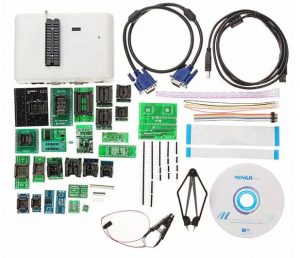How To Program Human Machine Interface? Human Machine Interface (HMI) is a crucial component of modern industrial automation systems. That allow for communication between a human operator and a machine. HMI is responsible for displaying process data, accepting operator inputs, and providing feedback to the operator in real time. In this blog, we will discuss the steps to program an HMI system.

Follow And Learn How To Program Human Machine Interface
Step 1: Choose an HMI software platform
The first step in programming an HMI is to choose the right software platform. There are several HMI software platforms available in the market, each with its unique features and capabilities. Some popular HMI software platforms include Wonderware, Rockwell FactoryTalk, Siemens WinCC, and Pro-face GP-Pro EX. Choose the platform that best suits your requirements and is compatible with your existing hardware and software systems.
Step 2: Define the HMI Project
Once you have chosen the software platform, the next step is to define the HMI project. This involves defining the scope and objectives of the HMI project. Determining the required hardware components, and creating a project plan. Make sure to consult with subject matter experts. End-users, and other stakeholders to ensure that the HMI project meets their needs and requirements.
Step 3: Design the HMI Screens
The HMI design process involves creating the screens that the operator will interact with. The HMI screens should be user-friendly, visually appealing, and provide all the necessary information to the operator. When designing the screens, consider factors such as screen size, resolution, color scheme, font type, and font size. Make sure to test the HMI screens on different devices and with different operators to ensure that they are easy to use and navigate.
Step 4: Create the HMI Objects
The next step is to create the HMI objects, such as buttons, sliders, and text boxes, that will be used to control the machine and display data. When creating the objects, consider factors such as object size, position, and behavior. Make sure to test the objects to ensure that they work as intended and provide the desired feedback to the operator.

Step 5: Program the HMI Logic
In other words, The final step is to program the HMI logic, which involves writing the code that will control the HMI objects and display data. The HMI logic should be designed to be flexible, robust, and scalable, and should allow for easy modification and expansion in the future. When programming the HMI logic, make sure to consider factors such as error handling, data validation, and security.
In conclusion, I think you learn How To Program Human Machine Interface programming an HMI is a complex process that requires careful planning and attention to detail. By following these steps, you can ensure that your HMI system is user-friendly, visually appealing, and provides all the necessary information to the operator in real-time. If you are not familiar with programming, consider hiring a professional HMI programmer to ensure that the HMI system is properly designed and implemented.
For more information please contact the PLC-UNLOCK Facebook page
Our Other Blogs:
How To Install Pro Tuner For Digital Stepper

